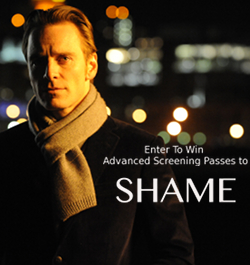Review: A Cruel Story of Youth (1960)
Nagisa Oshima’s A Cruel Story of Youth is a film that illustrates the disconnection between youthful rebellion, and the unwitting influences that helped to shape Japanese culture in the early 60’s. This was a time of postwar rebuilding and a generation of young people that were out to define the parameters of their own world, in diametric opposition of the comfortable conventions of pre-modern Japanese society. In their overzealous youthful exuberance, the characters in A Cruel Story of Youth are unable to escape Western influences that flood in to fill the cultural vacuum left by a reactionary rejection of all things pre-modern. They are essentially sealing their own fate by adopting pop culture stereotypes from American films and music to try and create a unique identity. There is a deeply rooted irony in youthful rebellion, and the young people in this film cannot see the fatalistic consequences of combining romanticized notions of Western culture with the delicate and impressionable nature of a society in a rebuilding phase. In their quest to define the parameters of their own existence, they essentially trap themselves in to a self destructive pattern of confused alienation.
Oshima understands the world that these youth occupy. He has a decade of youth-in-rebellion films from America to shape his visual sensibilities and sense of attitude. His idealism is tempered by the thoughtful and analytical nature that can find the contradictions present in both sides of an argument and possess two seemingly opposed philosophies simultaneously. He feels the alienation between the older generation and exuberant youth movements, and his faith in the status quo is shaken to the foundation by the results of World War II, but he realizes the dangers of supplanting one extreme with another. Filling the cultural void with Western influences would not fix their problems of national identity, nor would it help to bridge the gap between the young and old. It is because of this lack of firm ideological ground to stand on that characters in Oshima’s films reject the external influences from both sides and move to create insulated worlds where the immediacy of passion and pleasure form the only truths of existence.
It is these factors that make A Cruel Story of Youth seem like the desperate plea from the voice of thoughtful rationality. Oshima sees the dangers inherent in blind idealism and thoughtless adherence to societal dogma on either side of the spectrum, but doesn’t pretend to have a solution to the problem. Generational gaps are a part of the normal evolution of cultures, so Oshima studies and reports on the conditions rather than try to solve them with morality tales or authoritative lecturing. These elements grant this film an original voice while welding the social conditions of the time with rock and roll music and the iconic Western imagery of directors like Nicholas Ray. Through this it informs the audience of these conditions and the creeping Western influences are used ironically to borrow power from the iconographic imagery while simultaneously casting a critical eye on its unintended consequences.















 Review: Outrage (2010)
Review: Outrage (2010) Subversive Saturdays: Unglassed Windows Cast a Terrible Reflection
Subversive Saturdays: Unglassed Windows Cast a Terrible Reflection Review: Hugo (2011)
Review: Hugo (2011) Review: The Muppets (2011)
Review: The Muppets (2011) Review: The Muppets (2011)
Review: The Muppets (2011)





